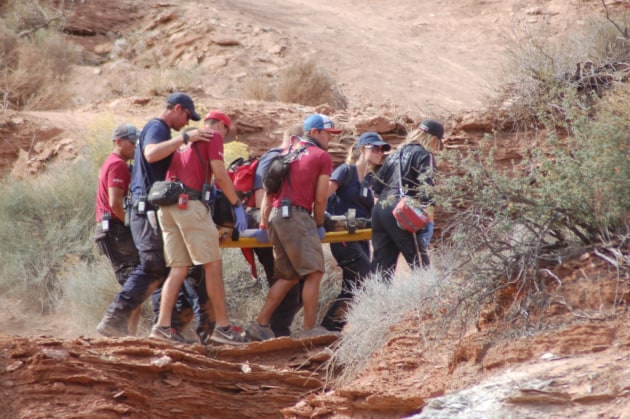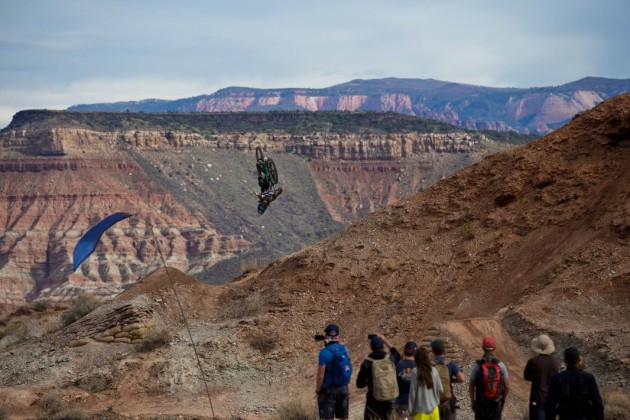How is Rampage still a thing?
As crashes go, it was an absolute shocker. Young American rider Paul Basagoitia went down hard in 2015 after dropping in from an unfathomable height. He had to be choppered away, with six hours of surgery on his T12 vertebrae and years of rehab ahead of him.
Another rider, Paul Bas, was also badly hurt that same year (below), while Canadian erider Graham Aggasiz was lucky to escape a monumental wreck in 2016 that broke his pelvis.
“The pressure of competition definitely played a role in this incident,” he said afterwards. “On any other day I wouldn’t have dropped in.”
And yet, 16 years after its inception, Rampage is still an annual event, and it still injures riders every year. I won’t watch it, share it or participate in any way.
The most recent iteration, held last week in Virgin, Utah thankfully claimed no major injuries, but mark my words well – it’s only a matter of time before a rider is killed.
But no… the drinks mob who back it reckon it’s all fabulous fodder for ‘Rampage’s Craziest Crashes’ vids for its site. No, I’m not giving you the link.
I spent my formative mountain bike years watching the classics like Chain Smoke, New World Order and, more recently, The Collective, and I have absolute respect for the skill, the videography and the sheer passion that accompanies every production. I still watch a lot of them today.
Incredibly talented and inspiring riders go hard on big terrain, and they sometimes go down – but it’s part and parcel of the journey.
Rampage, though, does nothing at all to advance the sport. Nothing. Find a huge, stupidly dangerous hill that’s been poked and prodded to suit ideal camera angles, pay athletes next to nothing to create content for huge global conglomerate to sell cans of fizzy sugar water. Add wearable cameras and repeat.
Rampage doesn’t produce new bike tech. It doesn’t offer the average mountain biker a single thing in terms of something to aim at. It’s not even especially good to watch; there’s not a lot of flow or grace, just white-knuckle drops and predictable backflips to flat down so-called ‘natural’ terrain that’s been fettled and shaped to suit the cameras.
The thing I hate most of all is that I dread that I’ll wake up one morning and find my social feed filled with tributes to a youngster chasing their dream, but instead who’s lost their life in pursuit of… what? A trophy? A free bike? Insta likes?
This isn’t meant to be a populist view. I know riders are hurt and worse in most mountain bike disciplines. Hell, I was on the spot when an endurance racer died riding a 100km race with his son. I’ve also seen my own kid in traction, his carbon Fox full face absolutely destroyed, after a big fall on a big hill. I don’t want to wish that on anyone.
I’m old and slow, but I’m fully aware that a life on the couch isn’t a life at all. If you love jumping off crazily big mountains, then do it for the love of it (and for God’s sake, wear a neck brace), not for a company's content requirements. I just have a terrible feeling that events like Rampage will push the boundaries too far to come back from.






